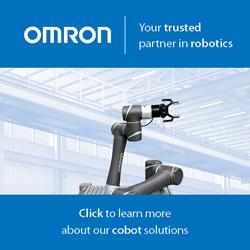Atlas, The Next Generation
Roving robot 'ground drones' take to streets for deliveries
DARPA - FLA Program Takes Flight
Earthbound Robots Today Need to Take Flight
SkyTech 2016 Post-Event Report
The Inevitability Of The Global March Toward Self-driving Vehicles
SoftBank's Pepper Robots to Staff Tokyo Cell Phone Store
HACKLET 93 - ROBOTICS TOOLKIT AND ESP8266 PACKET INJECTION
Greenbot: Driverless Tractor
Is Velo3D Plotting a 3-D Printed Robot Revolution?
Driverless Tractors and Drones to be Among the Key Applications for Agricultural Robots
Safely Bonding with Drones
How To Sell Robots To The Military
Drones' Good, Bad: Keep Your Eyes to the Skies as Drones Fly Out of Stores
Fighting for Life: Why Drones are Infiltrating Emergency Services
Records 991 to 1005 of 1195
First | Previous | Next | Last
Featured Product

